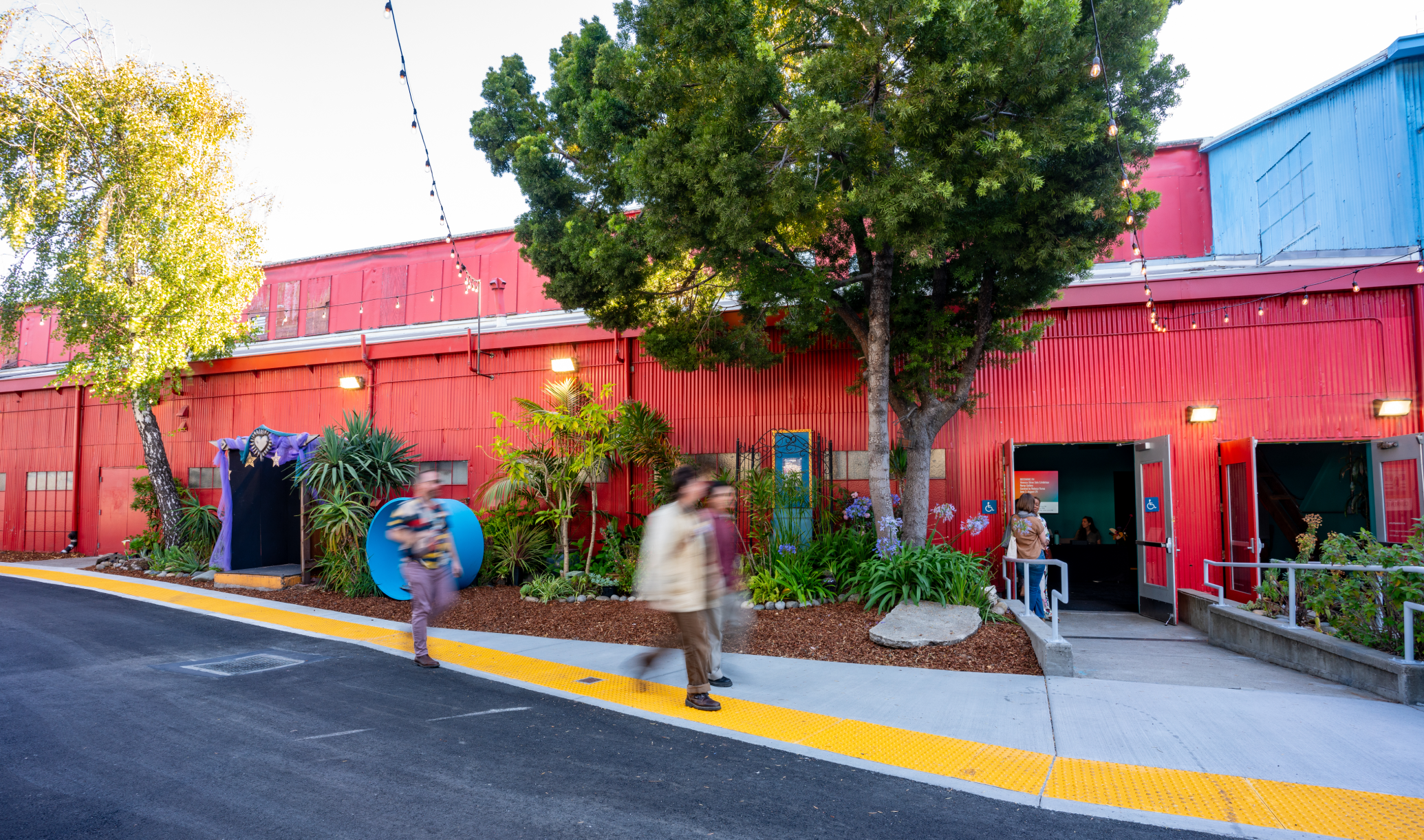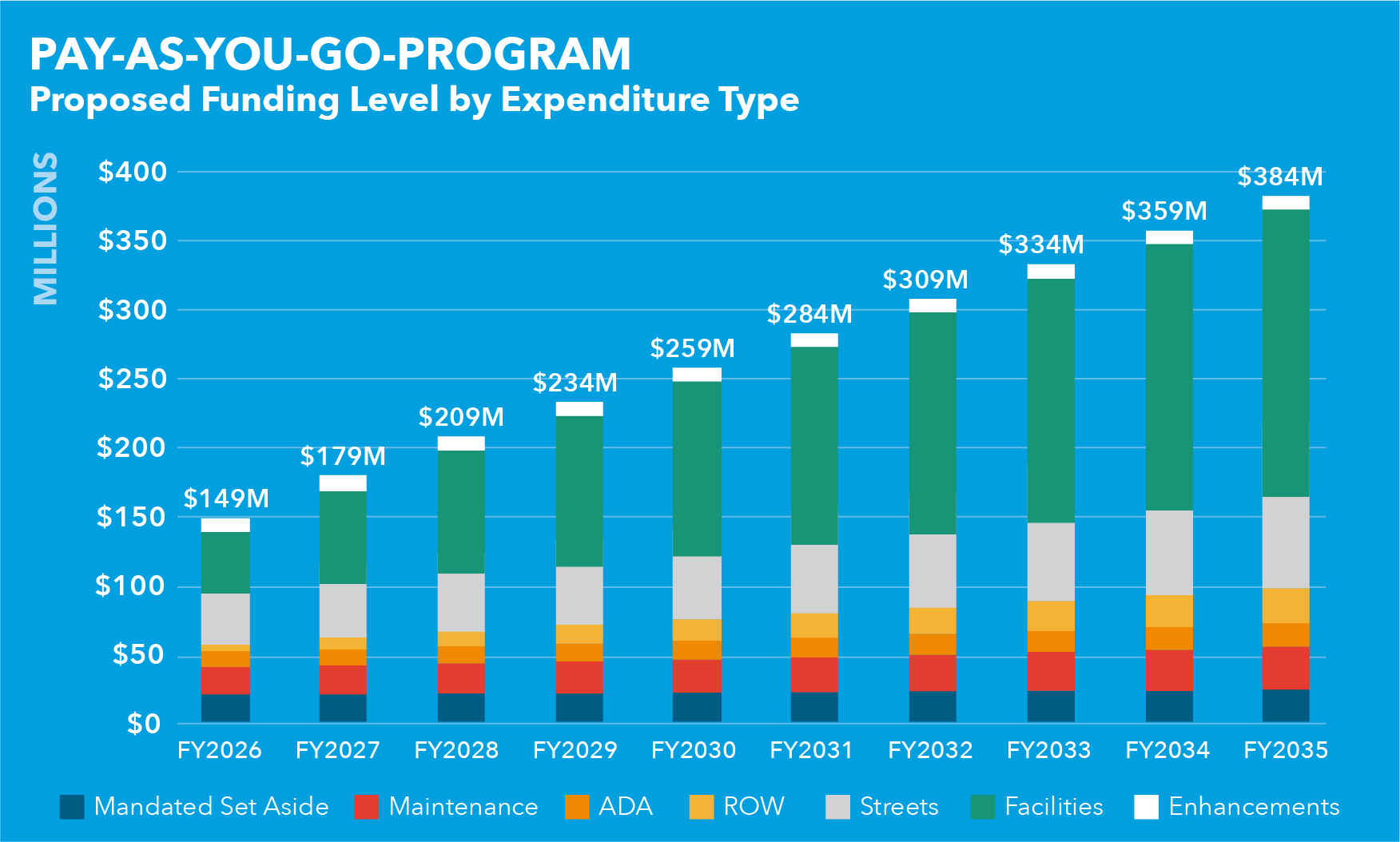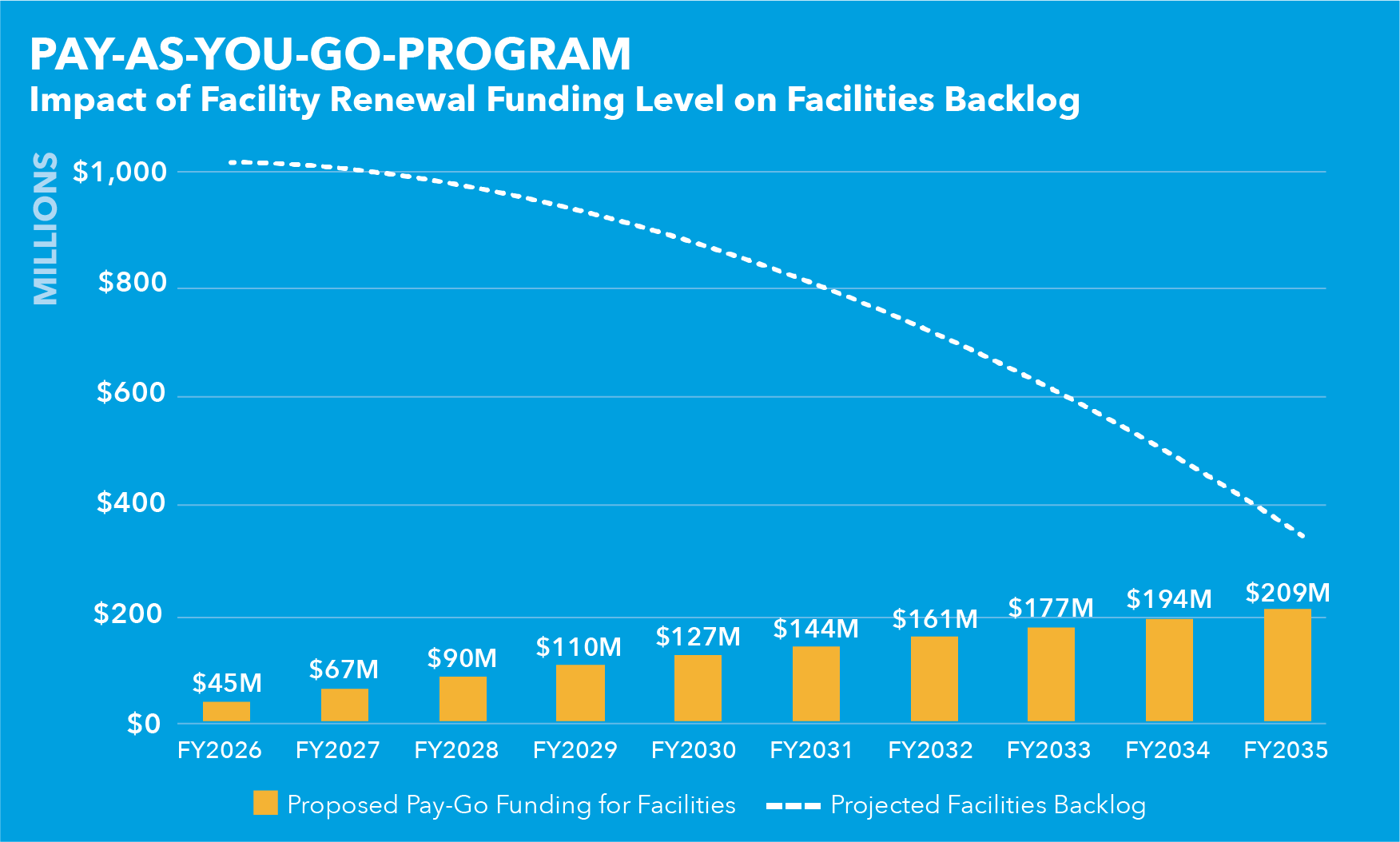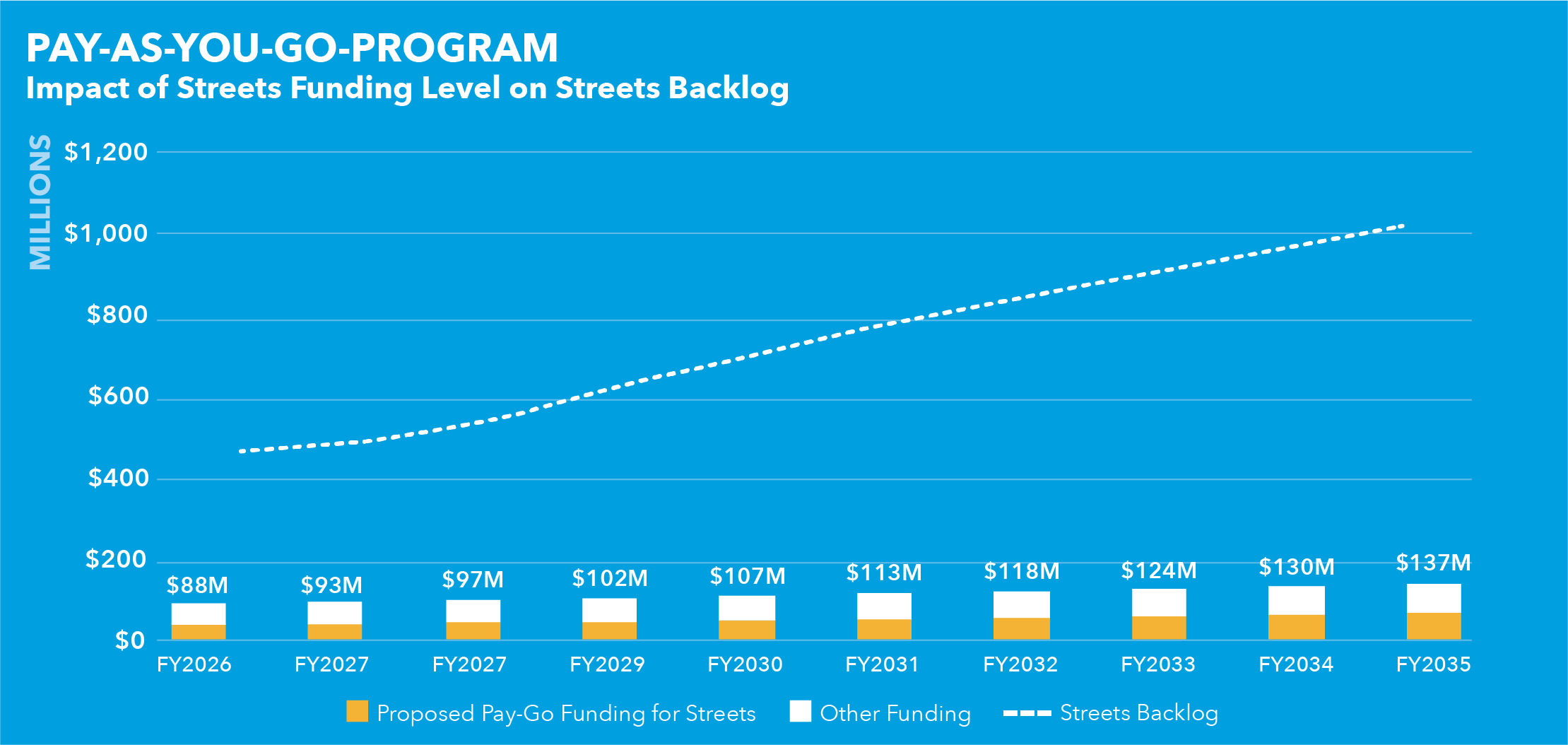The Plan recommends a level of funding of over $52 billion over 10 years. Despite this, the Plan defers nearly $7.5 billion in identified needs for General Fund departments, assuming recommended Pay-As-You-Go program funding levels as shown in Chart 2.1.
Years of historic underinvestment in the City’s capital program, exacerbated by recent economic difficulties, has resulted in a current facilities backlog of over $1 billion for General Fund facilities. The backlog is defined as the difference between the total current renewal need and the portion of this need that is funded in the first year of the Plan. The total current renewal need includes both items identified by departments as deferred maintenance, as well as first-year renewal needs. This backlog does not include buildings and sites for Recreation and Parks. While the Recreation and Parks department has identified a 10-year renewal need of $1.8 billion, funding towards those needs will come from the Recreation and Parks set-aside within the Pay-Go Program, as well as the planned 2030 Neighborhood Parks and Open Space G.O. Bond, pending voter approval.
If the City meets this Plan’s funding recommendations, the existing backlog is projected to start trending downward. As compared to the current level, the backlog is projected to decrease 65% to $351 million, as shown in Chart 2.2. To address the remaining gap, the City continues to investigate various approaches, including revising funding benchmarks, leveraging the value of City-owned assets for debt financing, preparing projects for voter consideration at the ballot, forming public-private partnerships, and exploring new revenue sources.
While the City has made significant progress in improving the quality of its streets in recent years, currently at a Pavement Condition Index (PCI) of 75, a backlog of $466 million remains if the City is to reach a PCI of 83, at which point the year-on-year cost of maintaining the streets declines significantly. The street resurfacing program will be supported by the General Fund to maintain a PCI of 75 over the 10-year period of this Plan, though the existing backlog is projected to increase to over $1 billion by FY2035, as shown in Chart 2.3.
Chart 2.1
Chart 2.2
Chart 2.3
Despite the challenges associated with the capital program, there is also reason to be optimistic. The total amount of capital investments exceeds $50 billion for the first time and is a marked improvement over the previous Capital Plan. Building on lessons learned during the pandemic, San Francisco is committed to building a stronger, more equitable, and resilient future. This includes commitments to increase housing, plans to address increasing hazards like heat, poor air quality, flooding, and sea level rise through planning documents like the Hazards and Climate Resilience Plan, the Climate Action Plan, and new General Plan Elements such as Safety and Resilience, Housing, Transportation, and Environmental Justice. While the investments needed are substantial, the commitment to an open and transparent capital planning process has proven that large challenges can be overcome by working together.
This Capital Plan puts forth a robust plan that balances maintaining current assets in a state of good repair with investments in major projects. Though there are risks associated with construction costs, a substantial capital backlog, and the scale of need, the City’s capital program is well positioned to respond and deliver a strong program of investment for San Francisco.
|
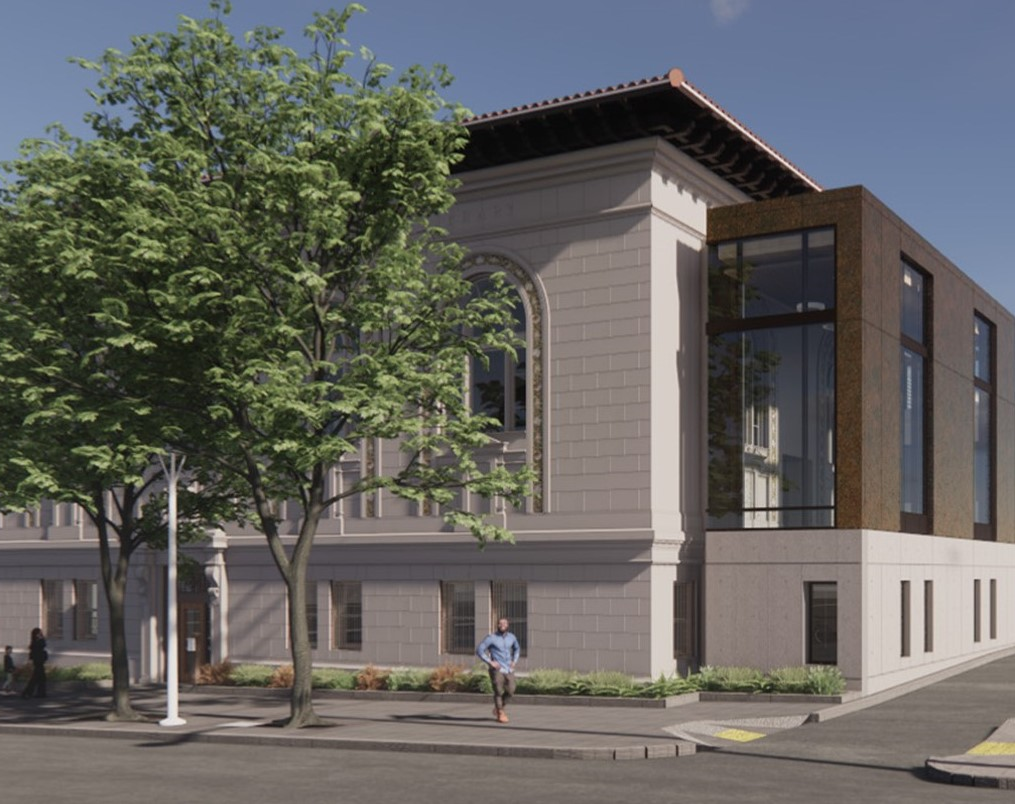
|
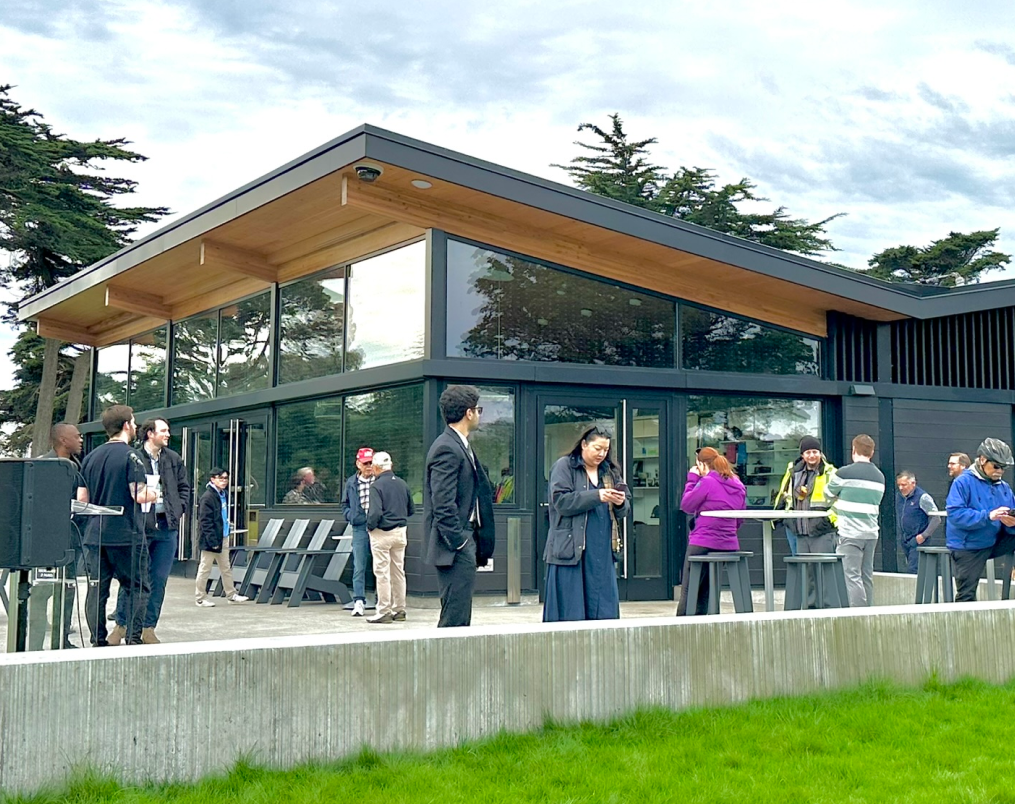
|
